Does it snow in Mexico? That was the initial question on my mind while organizing the ideal family getaway.
Mexico is a country of vast geographical diversity and contrasting climates, spanning from tropical beaches to rugged mountains. It’s often associated with warm, sunny weather, a perception that aligns with its popular coastal resorts and desert landscapes. However, this image overlooks the complexity of Mexico’s climate, including regions where snowfall is not just possible but a regular occurrence. The reality is that Mexico’s geography supports a wide range of weather conditions, challenging the stereotype of it being a perennial Summerland. In this article, we will explore everything related to the weather in Mexico and where the best places are to enjoy snow in Mexico.
Geographical Overview of Mexico
Mexico’s topography is as varied as its culture. The country is home to two major mountain ranges: the Sierra Madre Oriental and the Sierra Madre Occidental, which flank the Mexican Plateau in the center of the country. In the south, the Sierra Madre del Sur curves along the Pacific coast, and the Trans-Mexican Volcanic Belt crosses the country, featuring active and dormant volcanoes. Mexico’s extensive coastline stretches over the Pacific Ocean and the Gulf of Mexico, offering stunning beaches and tropical climates. Between these extremes lie vast deserts, lush jungles, and fertile valleys, contributing to the diverse climates experienced across the nation.
The interplay between Mexico’s varied topography and its climate zones is significant. The high altitudes of the mountain ranges and the volcanic belt create cooler temperatures, contrasting sharply with the country’s tropical and desert regions. These elevations are critical in shaping Mexico’s climate zones, influencing precipitation patterns and temperature variations across the country.
Climatic Zones in Mexico
Mexico’s climatic zones are as diverse as its terrain. The country can be broadly categorized into tropical, temperate, and arid zones, with variations in each due to altitude and geographic location. The tropical zone encompasses the low-lying coastal areas, where warm temperatures and high humidity prevail year-round. The temperate zone is found in the higher elevations of the central plateau and mountain areas, characterized by milder temperatures and seasonal rainfall. The arid and semi-arid zones cover the northern deserts and some interior regions, known for their extreme temperature fluctuations and sparse precipitation.
Snowfall in Mexico is primarily confined to the higher altitudes of the temperate zone, where colder temperatures are common during the winter months. The country’s tallest peaks, such as Pico de Orizaba, Popocatépetl, and Iztaccíhuatl, regularly don caps of snow, offering a stark contrast to the tropical imagery often associated with Mexico. Additionally, the northern states, including Chihuahua, Coahuila, and Nuevo León, can experience snowfall during winter cold spells, illustrating the climatic diversity that Mexico’s geography supports.
Read More: Best Places to Visit in March
Does it Snow in Mexico?
Contrary to the common perception of Mexico as a land of eternal summer, it indeed experiences snowfall, particularly in its mountainous areas and at higher altitudes.
Snow is uncommon in the coastal and lowland regions, yet some areas of Mexico transform into a beautiful winter wonderland. While some might view this as the least ideal time for a visit, it offers a unique and extraordinary experience for those seeking something out of the ordinary.
Where Does it Snow in Mexico?
In Mexico, snowfall is more common than many might expect, particularly in regions with higher altitudes and during the colder winter months. Here’s a closer look at where snow is a regular visitor:
- The Sierra Madre Mountain Ranges: These mountain ranges, including both the Sierra Madre Occidental and the Sierra Madre Oriental, experience snow due to their high elevations. The occurrence is more frequent in the northern parts of these ranges, where the altitude is highest.
- Volcanoes such as Pico de Orizaba, Popocatépetl, and Iztaccíhuatl: These towering volcanoes are not only some of the highest peaks in Mexico but also among the most likely places to find snow. Pico de Orizaba, the tallest mountain in Mexico, often sees snow year-round at its summit.
- Northern States like Chihuahua, Coahuila, and Nuevo León: During the winter months, these states can experience significant snowfall, especially in areas with higher elevations. The snowfall in these regions can vary significantly from year to year, but it is not uncommon for these areas to experience white winters.
The average snowfall in these regions can vary widely, with the high peaks like Pico de Orizaba experiencing permanent snow caps, while the northern states may see lighter snowfall, often only a few inches per year. The snowfall typically occurs from December through February, aligning with the colder temperatures of the winter months.
When Does it Snow in Mexico?
While Mexico may not immediately come to mind for its snowscapes, there are indeed areas within the country where snow does fall, primarily throughout the winter season from December to February.
Below is an overview of the locations and times when snow might be seen in Mexico:
Northern States: Regions such as Chihuahua, Coahuila, Nuevo León, and Durango experience snowfall, attributed to their closeness to the US border and elevated terrains.
- Chihuahua: Typically sees snow from December to February.
- Coahuila: Experiences snowfall from late December into January.
- Nuevo León: Particularly at higher altitudes, winter months are when snow is possible.
Central Highlands: Though less frequent, high-elevation areas including Nevado de Toluca, Volcán Popocatépetl, and Pico de Orizaba can witness snowfall.
- Nevado de Toluca: At altitudes above 15,000 feet, snow is possible from November through January.
- Pico de Orizaba: As Mexico’s tallest peak, its summit can retain snow throughout the year.
It’s important to remember that snow in Mexico is predominantly found at higher elevations; don’t expect snowy scenes on the beaches or in the tropical lowlands. For those in pursuit of a winter landscape, the mountain regions during the colder months are your likeliest candidates. However, it’s wise to consult local weather reports, as the presence and extent of snowfall can fluctuate from year to year.
Read Also: Most Beautiful Places in The World to Visit
12 Beautiful Places Where It Snows in Mexico
1. Mexiquillo, Durango
Occupying a vast 52 square miles northeast of Mexico City, Mexiquillo stands as an exquisite forested area and one of the premier destinations for witnessing snowfall in Mexico. Characterized by its breathtaking waterfalls and dense forests, the landscape of Mexiquillo is mesmerizing.
Visitors are encouraged to explore Mexiquillo from December to February to best experience its snowy splendor, with temperatures at their lowest. Access is straightforward via bus from La Ciudad, though guests should come prepared with their own provisions since dining options are limited to a single restaurant.
Packing a raincoat alongside winter attire is advisable. Mexiquillo serves as an ideal spot for hiking enthusiasts, adventure seekers, and families, offering numerous cabins for accommodation. The area is ripe for exploration and generally safe, provided common sense precautions are observed. For those keen on hiking or biking, joining an organized tour is recommended to navigate the best trails safely and avoid getting lost.
2. Itza-Popo National Park, Amecameca
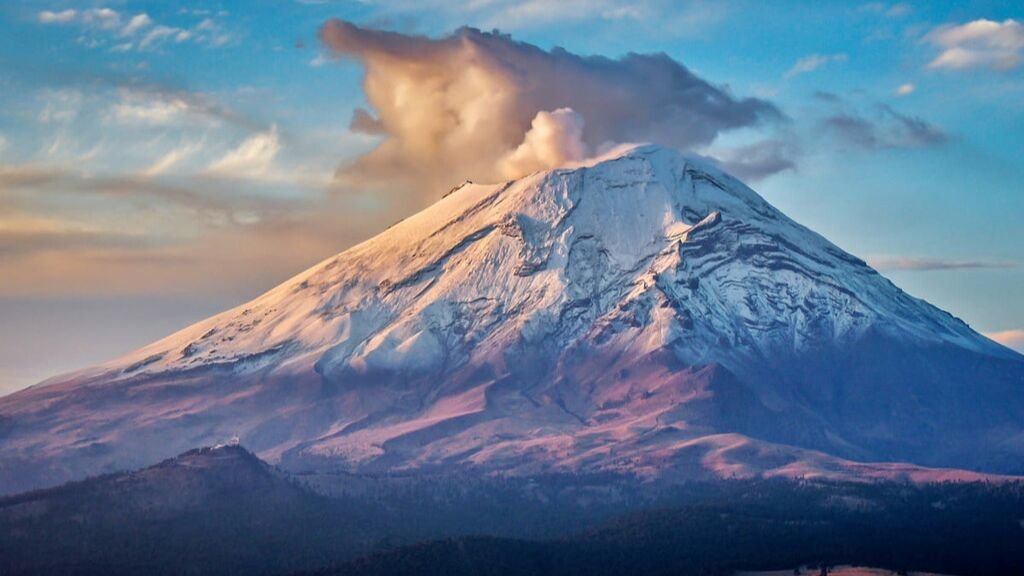
A short drive from Mexico City will bring you to Itza-Popo National Park, a high-altitude sanctuary renowned for its likelihood of snow. The park spans almost 40,000 hectares across the slopes of the Popocatépetl and Iztaccihuatl volcanoes, touching the states of Mexico, Puebla, and Morelos.
Winter months may bring hail and snowstorms, offering stunning views of the natural surroundings. While it’s not recommended to climb these volcanoes solo, numerous tours are available for those aiming for the summit. Climbing these volcanoes requires good physical fitness and some prior hiking experience.
3. Sombrerete, Zacatecas
Located in the northwestern part of Zacatecas, Sombrerete is a quaint town with a rich history dating back to the 16th century, where it emerged as a pivotal mining hub in New Spain. Today, it is celebrated for its colonial architecture and monuments, earning it a spot as a UNESCO World Heritage Site.
Visitors are encouraged to explore Sombrerete from December to February to witness the stunning snowfall that adorns Mexico. The town offers a plethora of sights and activities, from wandering through the snow-draped streets of the old town to admiring the natural beauty of the Sierra de Organos National Park’s rock formations. Tourist safety is well-regarded in Sombrerete, with a variety of accommodation options available to ensure a comfortable visit.
4. Barranca del Cobre, Chihuahua
The village of Creel is renowned as the entry point to the magnificent Barranca del Cobre (Copper Canyon), a canyon system that is four times larger than the Grand Canyon in the United States! The high altitudes of this extensive canyon system can experience significant snowfall, offering a breathtaking, snow-covered landscape.
Moreover, Barranca del Cobre can be explored via the Chepe Express, a train ride starting from Creel that ventures deep into the canyon, providing an unparalleled opportunity to enjoy the vistas in a unique way. This journey stands as one of Mexico’s most significant and enchanting hidden treasures, especially for those eager to experience snow.
Also Read: Best Places to Visit in February
5. Arteaga, Coahuila
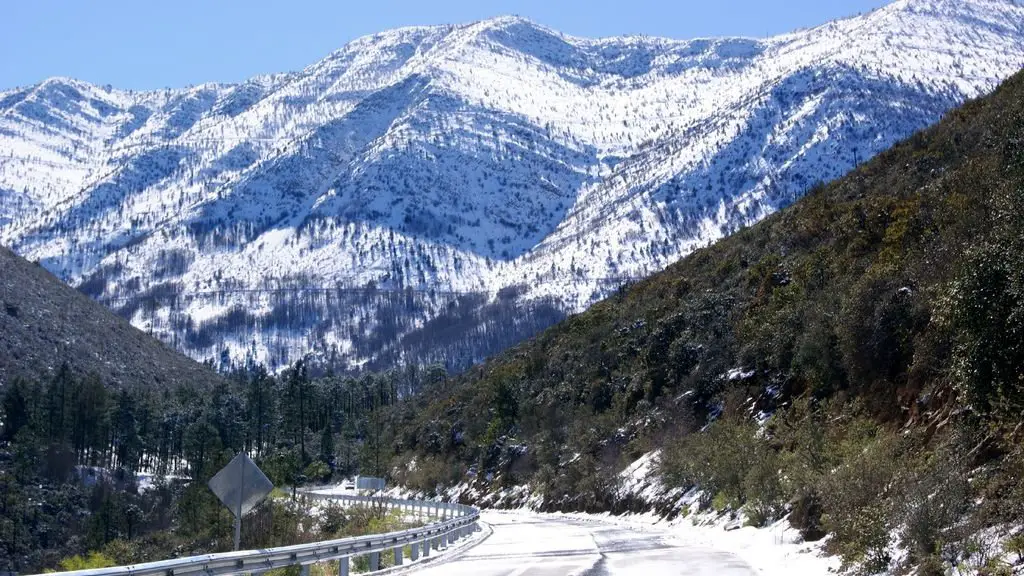
Arteaga, recognized as a Pueblo Magico (Magical Town) in Mexico, becomes a picturesque winter wonderland during the colder months. With temperatures dipping to about 46.6°F, December and January see the most snowfall, averaging about 0.3 inches. Known as the “Switzerland of Mexico” for its alpine scenery nestled between the Sierra Madre Oriental’s snowy summits and lush forests, Arteaga offers prime skiing and snow tubing experiences at its ski centers. The town is well-equipped for tourists, boasting excellent hotels and restaurants, ensuring a safe and unforgettable winter getaway.
6. Nevado de Toluca, State of Mexico
Nevado de Toluca, also known by its indigenous name, Xinantécatl, is a dormant stratovolcano located about 80 kilometers southwest of Mexico City. As the country’s fourth highest peak, standing at 4,680 meters above sea level, it’s a prime spot for snow enthusiasts from November to March. The volcano’s vast caldera, home to the stunning Laguna del Sol and Laguna de la Luna, offers spectacular views. Accessible by car or tour, the summit welcomes visitors not keen on hiking, though adventurous trails to the lagoons are available for those seeking a challenge, with guided tours recommended.
7. La Malinche, Tlaxcala y Puebla
La Malinche volcano, straddling Tlaxcala and Puebla, presents a snowy surprise in a country famed for its warm shores. Towering at 4,461 meters (14,636 feet), it often sports a snowy cap from December to February. The ascent may test those unaccustomed to high altitudes, but the region’s rich cultural tapestry, from local markets to traditional cuisine, adds depth to the snowy adventure.
8. Copper Canyon, Chihuahua
Surpassing even the Grand Canyon in size, Copper Canyon in Chihuahua transforms into a winter spectacle with its snow-draped landscapes towards the year’s end. This network of canyons offers a myriad of activities like horseback riding and hiking and is inhabited by the Rarámuri, renowned for their extraordinary endurance running. The Copper Canyon rail journey aboard El Chepe is an iconic way to explore, with recommendations to pause your trip for immersive stays within the canyon. Accommodations along the canyon rim provide awe-inspiring views, and the magical town of Creel serves as a perfect base for exploring natural attractions, including waterfalls, rock formations, and ancient caves.
9. Pico de Orizaba
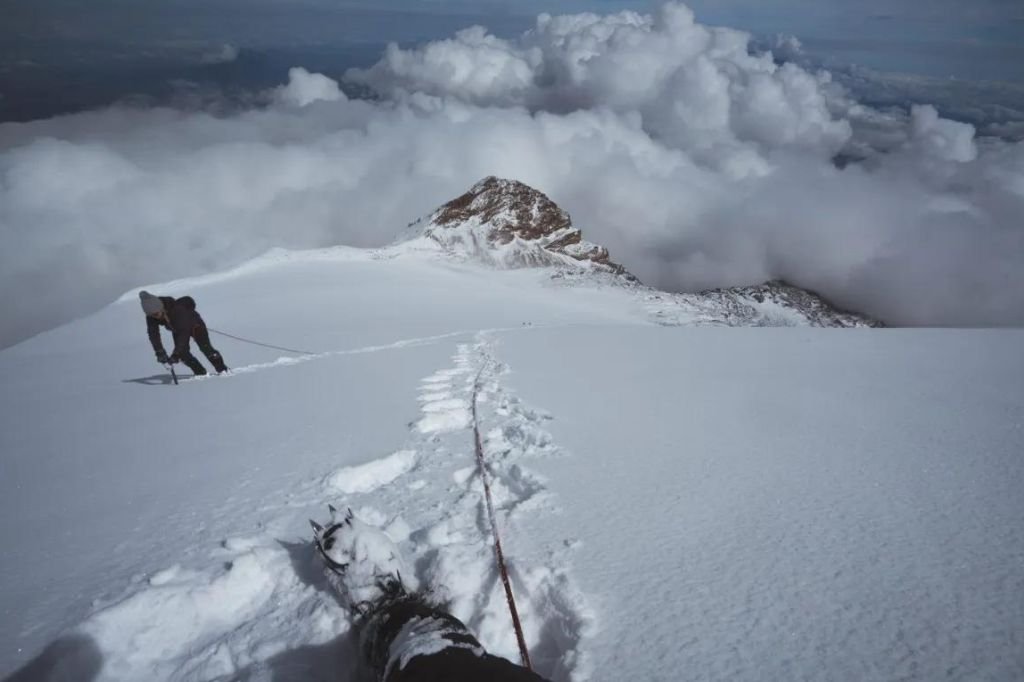
Discussing Mexico’s tallest peaks, Pico de Orizaba stands out as the highest, reaching an impressive 5,636 meters (around 17,000 feet). This magnificent volcano, also known as Star Mountain, is celebrated for its stunning snow-capped cone and is a favorite among those seeking extreme adventures.
The colder months attract visitors for various activities such as hiking, mountaineering, and ascending North America’s tallest volcanic peak. It’s noteworthy that Pico de Orizaba is second only to Mount Kilimanjaro in terms of volcanic summit prominence, visible from as far as 68 miles away, whether approaching by sea towards Veracruz or driving from Mexico City to Puebla. Engaging a reputable tour operator that emphasizes safety is crucial for those planning a visit.
You Can Read: Best Places to Visit in August for Honeymoon
10. Volcán de Colima, Colima, and Jalisco
For a snowy escapade in Mexico, consider the Volcán de Colima, located between Colima and Jalisco.
Also referred to as the Volcán de Fuego, this prominent peak occasionally showcases a fleeting snow cap due to its active volcanic nature.
Prospective visitors should stay updated on volcanic activity and any travel advisories. The temperatures can be quite cold, so dressing appropriately is advised.
11. Jocotitlán, Mexico State
Located within the State of Mexico, Jocotitlán might not be as renowned as prominent ski destinations, yet it captivates with its unique winter allure.
Its main attraction, the Nevado de Jocotitlán, is a possibly active stratovolcano that dons a snowy cap in the winter months, presenting breathtaking scenery.
12. Monterreal, Coahuila
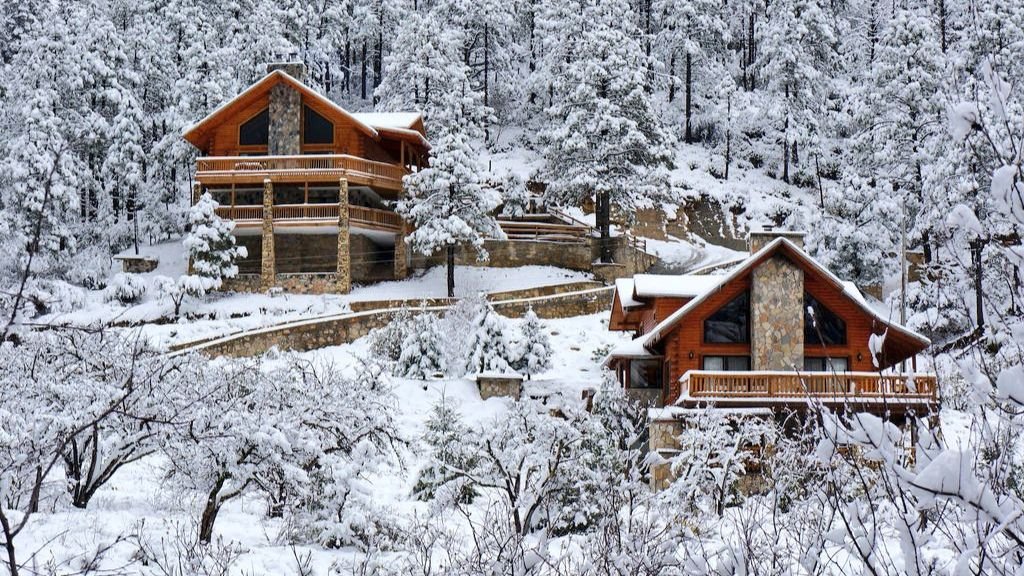
Nestled in the Sierra de Arteaga, Monterreal offers a unique snowy setting within Mexico’s predominantly warm climate, with potential snowfall from November to February. This destination caters to winter sports enthusiasts of all levels with its ski slopes and provides the perfect backdrop for those preferring a serene retreat in a wooden cabin amidst the scenic mountain trails and Northern Mexico’s alpine landscape.
Historical Snowfall Events in Mexico
Mexico has witnessed several notable snowfall events, particularly in regions where such weather is rare. For instance, cities in the northern states that typically experience mild winters have occasionally been blanketed in snow, causing excitement and surprise among residents. These events can have a significant impact on local communities, disrupting transportation and infrastructure, but they also provide a unique experience for many Mexicans unaccustomed to snow.
One memorable event occurred in March 2016, when a rare snowstorm hit parts of northern Mexico, including areas that hadn’t seen snow in decades. The snow-covered cars, homes, and streets, create picturesque scenes but also challenging infrastructure and daily life in these regions.
Read More: Best Places to Visit in Christmas Holidays
Effects of Climate Change on Snowfall in Mexico
Climate change is altering weather patterns worldwide, and Mexico is no exception. The effects on Mexico’s snowfall patterns are complex, with some areas experiencing decreased snowfall as temperatures rise, while others may see more frequent snow events due to increased volatility in weather patterns.
Researchers predict that global warming will continue to affect the snowfall in Mexico, potentially leading to reduced snow cover on the country’s highest peaks. This change could have significant impacts on water resources, as many of Mexico’s rivers and aquifers rely on meltwater from snow and ice. The ecosystems that depend on these water sources could also face challenges, affecting biodiversity and agriculture.
As Mexico continues to navigate the impacts of climate change, monitoring changes in snowfall patterns will be crucial for water resource management and protecting vulnerable ecosystems. The future trends in snowfall and their effects on the environment, water supply, and local communities remain a critical area of study for scientists and policymakers alike.
Tourism and Snow in Mexico
While Mexico is famed for its sun-soaked beaches and tropical climates, it also offers unique destinations for those seeking the thrill of snow. Here are some notable spots and activities for winter sports enthusiasts and snow lovers:
- Monterreal Resort, Coahuila: This resort is a hidden gem for skiing and snowboarding in Mexico. Although it relies heavily on artificial snow, it provides a rare opportunity to hit the slopes in a country not traditionally known for winter sports. The resort offers equipment rentals, lessons, and beautiful log cabins for a cozy stay.
- Nevado de Toluca, Estado de México: For those who prefer natural snow, the Nevado de Toluca, a large volcano southwest of Mexico City, occasionally receives enough snowfall for snowshoeing and hiking. Its stunning crater lakes, surrounded by snow-covered peaks, offer breathtaking scenic tours.
- Pico de Orizaba: Adventurous climbers and experienced mountaineers may seek the challenge of ascending Mexico’s highest peak. Guided tours offer the chance to trek through snow and ice to reach the summit, where the views are unparalleled.
Is it Safe to Visit Mexico?
Absolutely, traveling to Mexico is safe. However, it’s important to note that the country is vast, and safety levels can vary across different regions. While certain areas, particularly some northern regions close to the US border, may present safety concerns, there are numerous safe and captivating places to discover throughout Mexico.
It’s crucial to exercise good judgment and thoroughly research your intended destinations. If ever in doubt, it’s better to err on the side of caution. Additionally, be mindful of your possessions since minor thefts can occur.
Beyond these considerations, selecting a secure destination and adhering to common safety precautions, similar to those recommended globally, should ensure a worry-free visit. For those planning to drive in Mexico, heed advice on car rentals and inquire locally about the safest routes, particularly emphasizing the importance of avoiding nighttime driving.
Know More: Does Mexico Celebrate Thanksgiving?
FAQs about Snow in Mexico
Is it common for it to snow in Mexico?
While not common throughout the country, certain high-altitude regions and northern states experience snowfall during the winter months.
Can you ski in Mexico?
Yes, skiing is possible in Mexico, primarily at Monterreal Resort in Coahuila, which uses artificial snow for its slopes.
Does it snow in Mexico City?
Snow in Mexico City is extremely rare due to its elevation and climate. However, the surrounding mountainous areas, such as Nevado de Toluca, can receive snow.
How does snowfall affect daily life in Mexico?
In regions unaccustomed to snow, even light snowfall can disrupt transportation and daily activities. However, in areas where snow is more common, communities are better equipped to manage its impact.
What is the coldest state in Mexico?
Tlaxcala State holds the title of being the coldest state in Mexico. Positioned to the east of Mexico City in the central part of the country, this landlocked state sits roughly 2,134 meters (about 7,000 feet) above sea level. Over the last three decades, Tlaxcala has recorded an average annual temperature of 40ºF (4.44ºC), making it the coldest state based on long-term temperature averages.
What’s the hottest month in Mexico?
July stands as the warmest month in Mexico, boasting an average peak temperature of approximately 79 degrees Fahrenheit.
Following closely, August typically experiences an average temperature near 77 degrees Fahrenheit.
Does it snow in Mexico at Christmas?
The presence of snow in Mexico over the Christmas season varies across the country. While certain areas, especially those at higher elevations or in the north, may experience snow during the winter, the southern and coastal regions of Mexico typically do not see snowfall. So, while it’s possible for some parts of Mexico to have a white Christmas, this is not the case for the entire country.
Conclusion
The occurrence of snow in Mexico challenges the stereotypical image of the country as a year-round warm paradise. From the Sierra Madre mountain ranges to the majestic volcanoes and the northern states, snowfall adds another layer to Mexico’s climatic and geographical diversity. Whether it’s skiing in Coahuila, hiking to the snow-capped summit of Pico de Orizaba, or experiencing a rare snowfall event in a typically warm region, snow in Mexico offers unique experiences that contrast sharply with the country’s more famous tropical allure.
This exploration reveals the beauty and diversity of experiencing snow in selected regions of Mexico, underscoring the country’s complex climate and topography. It serves as a reminder of the natural wonders and surprises that await in this culturally rich and geographically diverse nation.


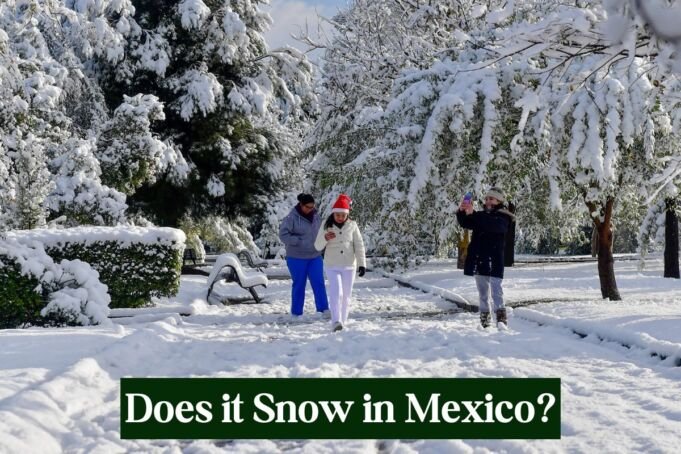












[…] Know More: Does it Snow in Mexico […]
[…] Know More: Does it Snow in Mexico […]
Comments are closed.